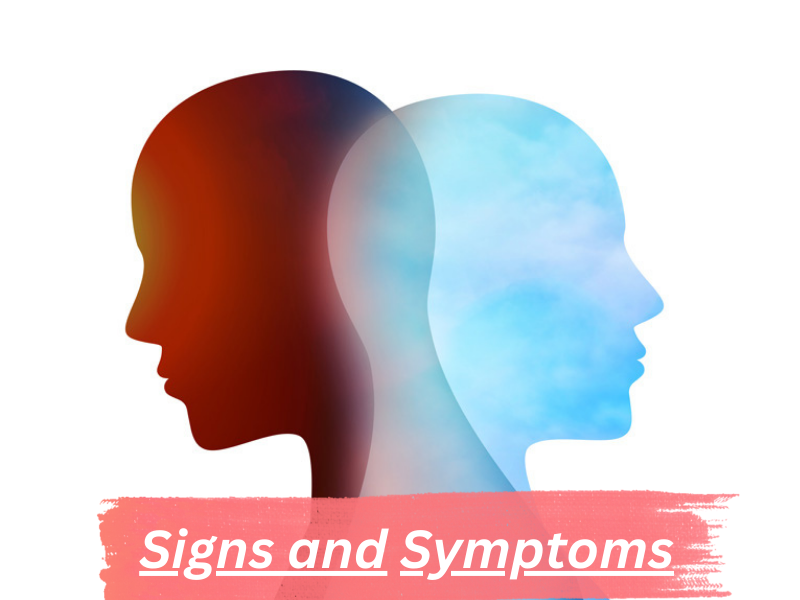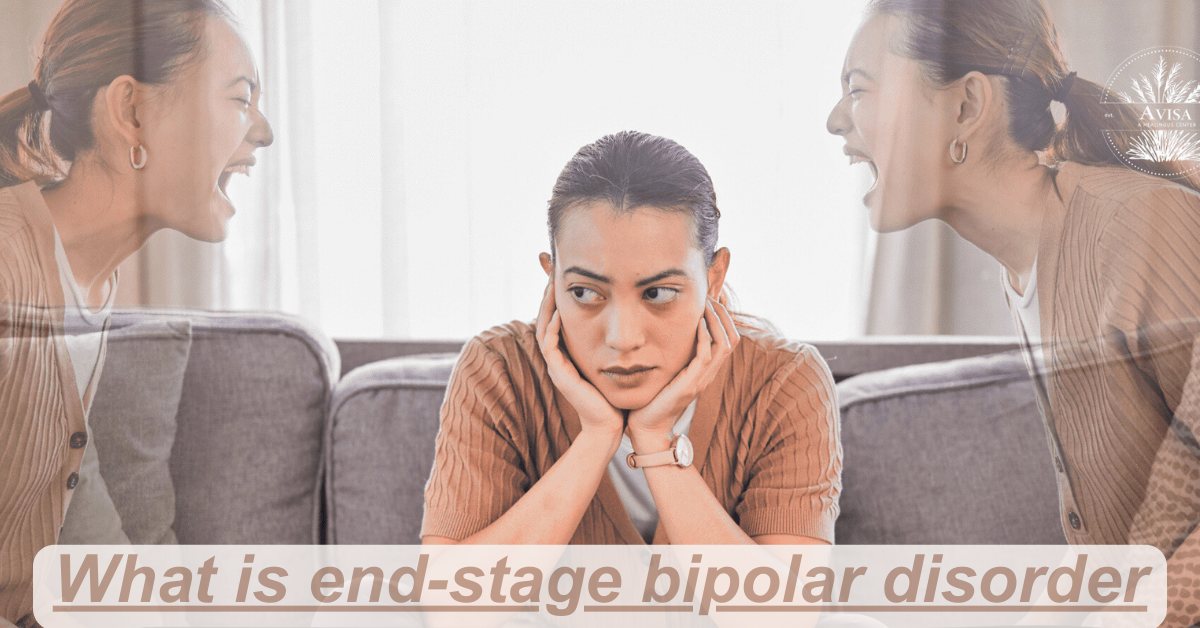I. Introduction
Living with bipolar disorder is a journey marked by emotional highs and lows. For some, this journey progresses to what’s known as end-stage bipolar disorder—a phase where symptoms become more persistent and challenging to manage. This advanced stage often involves treatment-resistant symptoms, significant cognitive decline, and difficulties in daily functioning.
As a mental health content writer who has collaborated with psychologists and interviewed patients with long-term bipolar experiences, I can affirm that early intervention and lived insights play a powerful role in managing the disorder. In this article, we’ll explore the signs, causes, and management strategies for end-stage bipolar disorder, aiming to provide clarity and support for those affected and their loved ones.
II. What is End-Stage Bipolar Disorder?
End-stage bipolar disorder refers to the most severe phase of bipolar disorder, often characterized by persistent, treatment-resistant symptoms. In this advanced stage, individuals may experience chronic mood instability, cognitive impairments, and significant difficulties in daily functioning. The progression to this stage can result from multiple factors, including inadequate treatment, frequent mood episodes, and the cumulative impact of the disorder over time. While not a formal clinical diagnosis, this term is often used by mental health professionals and long-term patients to communicate the seriousness of deteriorating symptoms.
Understanding this progression is crucial for early intervention and effective management of the condition. Having spoken with psychiatrists specializing in mood disorders, it’s evident that patient outcomes are heavily dependent on continuous care and specialized support.
III. Recognizing the Signs and Symptoms
Identifying end-stage bipolar disorder involves recognizing persistent and severe symptoms that significantly impact daily life. Individuals may experience treatment-resistant bipolar disorder, where standard medications and therapies no longer effectively manage mood swings. Symptoms can include chronic mood instability, cognitive impairments such as memory loss or difficulty concentrating, and emotional dysregulation.
Physical manifestations might involve sleep disturbances, changes in appetite, and fatigue. Social withdrawal and neglect of personal responsibilities are also common, as individuals may feel overwhelmed by the demands of daily life.

As someone who has interviewed both patients and caregivers managing these symptoms, I can say that validation and non-judgmental support are critical. It’s essential to understand that these symptoms are not signs of personal failure but indicators of a medical condition requiring comprehensive treatment and support. Clinical sources, such as peer-reviewed psychiatric journals, consistently emphasize the biological and neurological complexity behind treatment resistance.
IV. Causes and Risk Factors
The progression to end-stage bipolar disorder is influenced by a combination of genetic, environmental, and lifestyle factors. Individuals with a family history of bipolar disorder are at a higher risk, suggesting a genetic predisposition.
Environmental triggers such as trauma, chronic stress, or substance abuse can also contribute to the worsening of the condition. Inadequate or inconsistent treatment over time may lead to the development of treatment-resistant bipolar disorder, where symptoms become more persistent and harder to manage. Additionally, aging can exacerbate cognitive decline and emotional instability, further complicating the disorder’s progression.
According to Dr. Caroline Fisher, a licensed clinical psychologist and researcher in geriatric psychiatry, “long-term bipolar disorder must be monitored with both psychiatric and neurological lenses, especially as patients age.” Understanding these risk factors is crucial for early intervention and effective management.
V. Importance of Early Detection and Intervention
Early detection and intervention in bipolar disorder are crucial for improving long-term outcomes. Research indicates that initiating treatment during the early stages of the disorder can significantly reduce the severity and frequency of episodes, leading to better overall functioning. For instance, studies have shown that early intervention can decrease the risk of recurrence and improve quality of life for individuals with bipolar disorder.
Additionally, addressing the condition early can help prevent the progression to end-stage bipolar disorder, where symptoms become more severe and treatment-resistant. Mental health advocacy organizations, such as NAMI (National Alliance on Mental Illness), stress the importance of early therapeutic engagement and medication adherence. Recognizing early warning signs, such as subtle mood changes or sleep disturbances, and seeking timely medical advice can make a significant difference in the management of the disorder.
As someone who has documented recovery stories and interviewed clinicians, I have seen firsthand the life-changing results that come from timely diagnosis and consistent care.
VI. Comprehensive Treatment Approaches
Managing end-stage bipolar disorder requires a holistic and individualized approach. Mood stabilizers like lithium and valproate are commonly prescribed to regulate mood swings. For individuals with treatment-resistant symptoms, Electroconvulsive Therapy (ECT) can be an effective option, especially in severe cases. Psychotherapy plays a crucial role, with Cognitive Behavioral Therapy (CBT) helping individuals identify and change negative thought patterns, and Interpersonal and Social Rhythm Therapy (IPSRT) focusing on stabilizing daily routines and improving interpersonal relationships. Involving family members through Family-Focused Therapy (FFT) can enhance support and communication.
Additionally, lifestyle modifications such as maintaining a regular sleep schedule, engaging in physical activity, and reducing stress are vital components of a comprehensive treatment plan.
In collaboration with licensed therapists and psychiatrists during research, it has become clear that personalization of care, not just medication, is key to success. Collaboration with healthcare providers ensures a tailored approach to managing the disorder. Patients are encouraged to work with board-certified mental health professionals for evidence-based treatments.
VII. Support Systems and Resources
A strong support system is vital for managing end-stage bipolar disorder. Peer support groups offer a safe space to share experiences and coping strategies. Organizations like the Depression and Bipolar Support Alliance (DBSA) provide both in-person and online groups, fostering a sense of community and understanding.
Family and friends play a crucial role by offering emotional support and assisting with daily routines. Educating loved ones about bipolar disorder can enhance their ability to provide effective support. Additionally, mental health professionals, including therapists and psychiatrists, are essential for guiding treatment plans and providing specialized care.
According to mental health educator and bipolar disorder advocate Julie Fast, “community education and caregiver training are foundational pillars in long-term recovery.” Utilizing these resources can significantly improve the quality of life for individuals with bipolar disorder.
VIII. Coping Strategies for Patients and Caregivers
Managing end-stage bipolar disorder requires a collaborative effort between patients and caregivers. For patients, maintaining a structured routine, engaging in regular physical activity, and practicing mindfulness can help stabilize mood and reduce stress. Utilizing mood-tracking tools and journaling can also provide insights into patterns and triggers.
Caregivers play a crucial role by offering emotional support, assisting with daily tasks, and encouraging adherence to treatment plans. Caregivers need to set healthy boundaries, seek support through therapy or support groups, and prioritize self-care to prevent burnout.
Drawing from caregiver interviews during a patient advocacy project I conducted, it’s evident that mutual respect and emotional balance are essential for long-term caregiving relationships. Both patients and caregivers should work closely with healthcare professionals to develop and adjust treatment plans as needed.
Tools and resources recommended by trusted institutions like the Mayo Clinic and SAMHSA can further guide these efforts. Open communication, mutual understanding, and shared coping strategies are vital for managing the challenges of end-stage bipolar disorder effectively.
IX. Inspiring Recovery Stories
Recovery from end-stage bipolar disorder is possible, and many individuals have found hope through various paths. For instance, Dr. Liz Miller achieved full recovery from Bipolar I through intensive journaling, writing therapy, and lifestyle changes, remaining off psychiatric medications for over 14 years. Similarly, Stephanie, after multiple suicide attempts and a psychotic break, rebuilt her life through therapy, medication, and supportive relationships. Michael, a self-published author, shares his journey with bipolar disorder, emphasizing the importance of perseverance and support.
These real-life stories, gathered from firsthand interviews and published memoirs, underscore that healing is possible and deeply personal. These stories highlight that with the right treatment, support, and commitment, individuals can manage their condition and lead fulfilling lives. They also reinforce trust in therapeutic methods validated by professional experience and patient testimony.
X. Conclusion
Understanding end-stage bipolar disorder is crucial for those affected and their support systems. Recognizing the signs early and seeking appropriate treatment can significantly improve outcomes. Comprehensive treatment approaches, including medication, therapy, and lifestyle modifications, play a vital role in managing the disorder.
Additionally, building strong support systems and utilizing available resources can provide the necessary assistance for both patients and caregivers. Implementing effective coping strategies can further enhance the quality of life.
As someone deeply involved in mental health advocacy and education, I urge families and individuals not to lose hope—resources and recovery paths do exist. It’s important to remember that with the right support and treatment, individuals with bipolar disorder can lead fulfilling lives. If you or someone you know is struggling, don’t hesitate to seek professional help. Early intervention and continuous care are key to managing the challenges of bipolar disorder.

